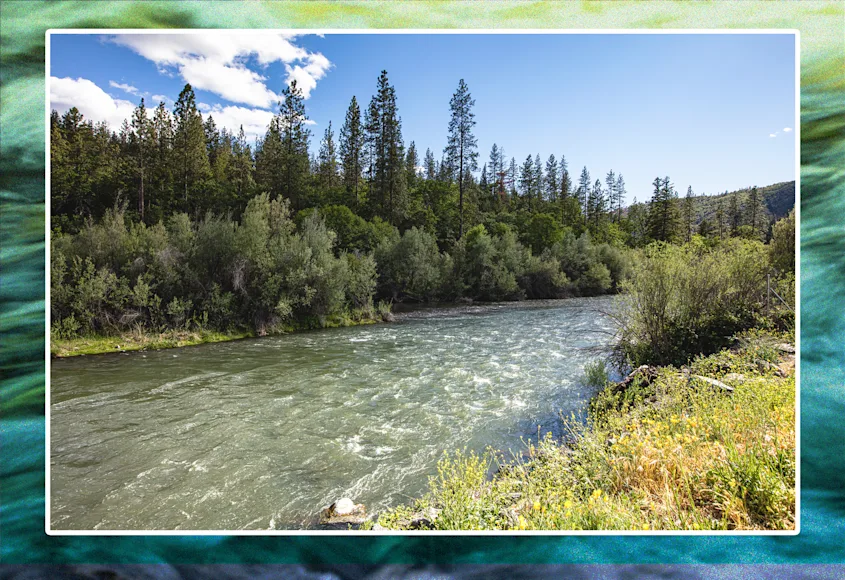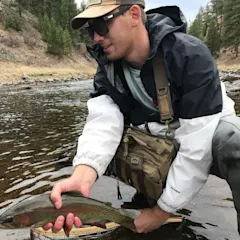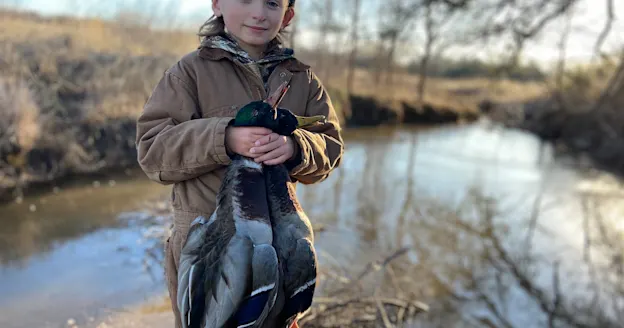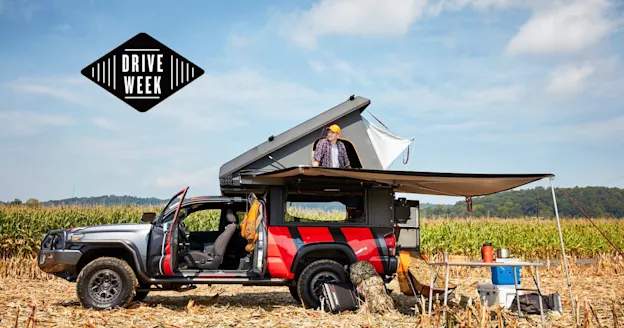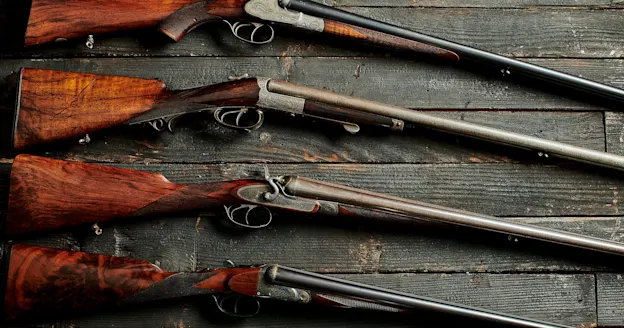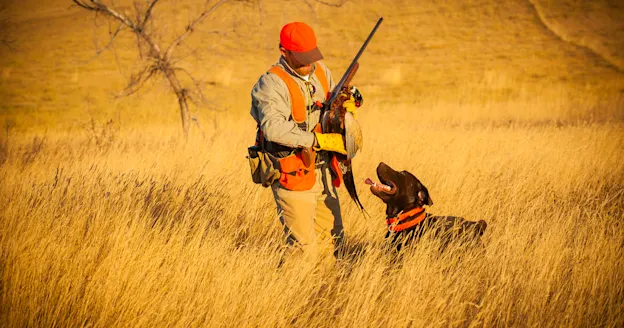THE KLAMATH BASIN is one of the most iconic watersheds in North America. It’s also one of the most troubled. The basin, which spans 15,751 square miles along the remote California-Oregon border, was once considered the “Everglades of the West” for its network of more than 440,000 acres of wetlands. The sky blackened each fall with millions of ducks migrating down the Pacific Flyway. And the Klamath River supported some of the largest runs of salmon and steelhead in the world, which sustained Indigenous tribes for generations.
With the Klamath Project, which was approved in 1905, the federal government drained much of the area’s wetlands to make way for agriculture and, soon after, began damming the river for hydroelectric purposes, blocking salmon and steelhead from hundreds of miles of spawning habitat. Still, for years, a tentative balance was struck. Farms received just enough water to grow crops, the Klamath Basin wildlife refuges got just enough water to remain a duck-hunting destination, and the river had just enough water to sustain healthy populations of steelhead and salmon.

Iron Gate is the tallest and farthest downstream dam on the Klamath River. Megan Steffen
In recent years, that’s changed. Overallotment—too many users, not enough water—has created extreme division among local communities. A decades-long megadrought will leave the country’s first National Wildlife Refuge established for migratory waterfowl completely dry by the end of summer. The effects of the dams on the river’s water quality have been compounded by climate change to devastate wild anadromous fish stocks—and the communities that depend on them. As a watershed, the Klamath Basin has reached its breaking point.
Yet this ecological crisis also has the potential to become one of America’s greatest conservation success stories. Local conservation leaders have worked relentlessly to broker agreements among different stakeholders, greenlight the removal of four dams in the largest river restoration project in history, and find creative ways to preserve and rejuvenate the basin’s wetlands. From a tribal lawyer laser-focused on protecting her people’s salmon-fishing traditions to a biologist doing everything he can to preserve the remnants of the basin’s wetlands, these are the people fighting to return the Klamath to its former glory.
This is their river.
The Attorney
Amy Cordalis remembers the feeling of abundance. Her tribe, the Yurok, have been salmon fishing on the Lower Klamath “essentially forever,” she says. As a child, Cordalis learned how to gillnet and fish conventionally from her father. She loved it.
“Salmon fishing is a unifying, electrifying experience,” she says. “One of the most powerful parts of the experience as a Yurok, beyond the adrenaline and fun, is knowing that this is exactly what your ancestors did. You’re carrying on their lifeway by doing the thing that every generation of your family has always done in the same place.”
In a community where many folks have low incomes—today, tribal members on the reservation average around $11,000 per year—salmon were more than a means of recreation. They provided food and economic security. Cordalis even paid her rent during college by selling smoked salmon. But starting in the early 1990s, the river’s coho and chinook salmon runs were in steep decline.
In 2002, Cordalis was working as a summer fish technician for the Yurok Tribe, recording the daily catch. One day, she noticed something was wrong—really wrong. Adult chinook salmon were jumping up to the surface as if gasping for air, then diving back down and going belly up a couple of feet downstream. Dead fish with rotting gills piled up along the banks.
“Around 70,000 adult fall chinook salmon died within a week from a fish disease that occurs in rivers with warm, polluted water and low flows,” Cordalis recalls. “That year, the U.S. government diverted a lot of water to support agriculture at the top of the basin. Our scientists warned them they would cause some form of ecological collapse, and they didn’t listen. It could have been prevented. I remember thinking my great-grandmother must be rolling over in her grave right now looking at these dead fish. I decided on the spot to go to law school and dedicate my life to preventing anything like that from happening ever again.”
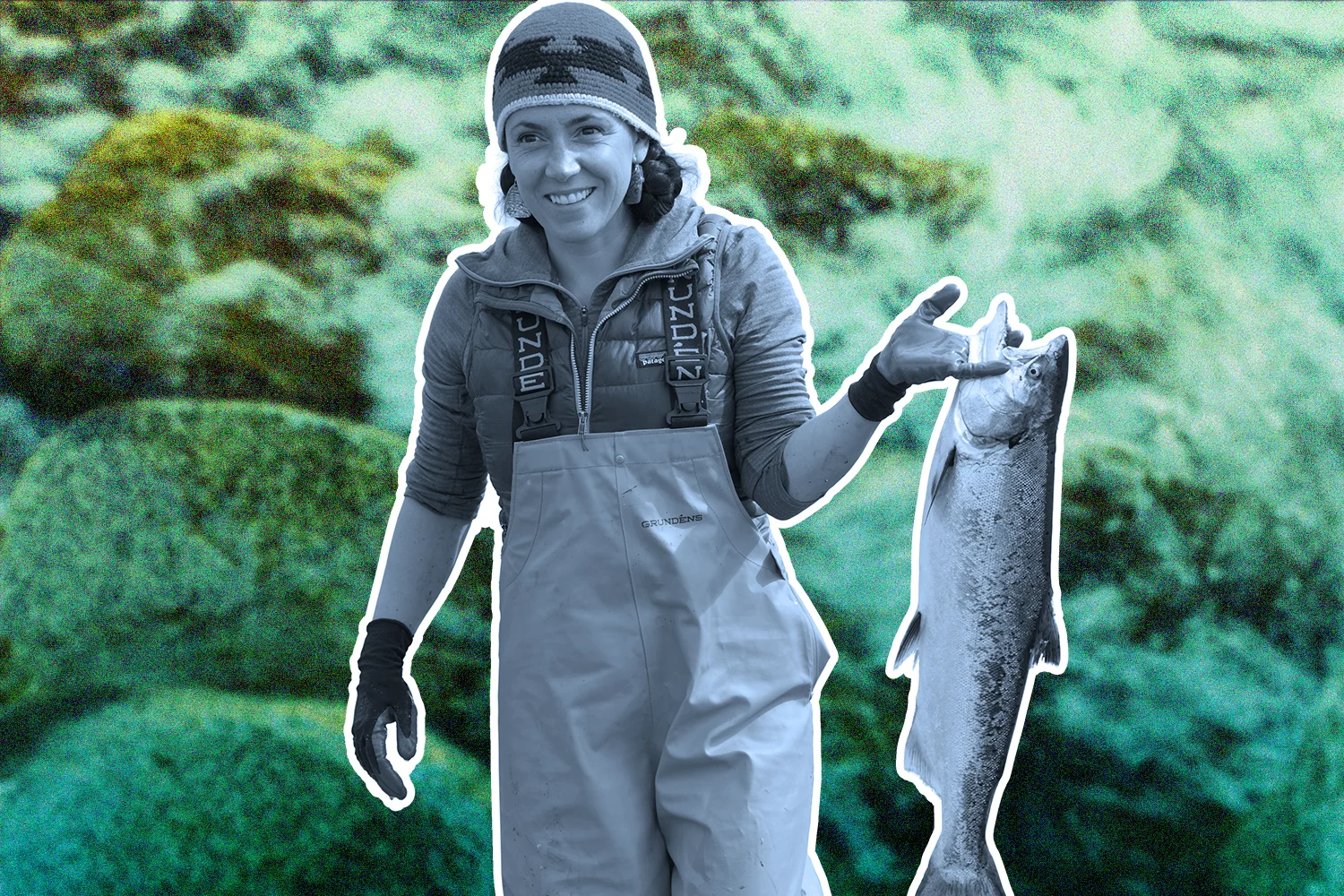
Cordalis holds a nice chinook salmon from her home waters. Matt Mais; background by Megan Steffen
As Cordalis worked her way through school, the fishing declined even further. Drought conditions were compounded by agricultural water diversions to decimate coho and chinook salmon—species that are sensitive to poor water conditions. Meanwhile, a series of dams blocked fish from their historic spawning grounds and worsened water quality.
In 2016, Cordalis became the tribe’s general counsel and immediately worked to address the crisis. She says her ability to translate the messages of the federal government to Native Americans, and vice versa, made her effective in her role. The law is a language that she’s learned to speak to help her people and their river.
Cordalis represented the tribe in working to get the dam removals approved. She also used the Endangered Species Act in cases against the Bureau of Reclamation to put more water in the river when the endangered coho salmon needed it most. After she had served as general counsel for six years, the tribe asked Cordalis to focus solely on Klamath River restoration work. As she’s transitioned to this role in 2021, she’s stepped up her advocacy efforts and founded the Rivers to Riffles Conservation Fund. The organization’s current goal is to raise money to support the tribe’s work to restore the Klamath River. One day, Cordalis plans to extend her work to other tribes throughout the country.
Even with all she’s taken on, Cordalis still makes time these days to teach her three boys how to fish. On a good day, they might get a couple—a far cry from the hundreds Cordalis remembers netting when she was young. “We as the Yurok lost a lot during colonization, but we still had fish,” she says. “Now we don’t. We are creatures of habit, so we still go to the river to fish. But we don’t catch anything. We don’t have the fish to trade or eat. That is a tremendous loss.”
Still, Cordalis is hopeful. The dam removals will improve the river’s resilience and increase spawning habitat for salmon, and Cordalis says she will continue fighting to secure enough water flows to ensure the fishes’ survival. “The river and the salmon are stronger than we can even imagine,” she says. “Under Yurok law, we declared personhood rights for the river because, in our culture, it is alive just like you or me. When we heal it, it will once again be healthy.”
The Guide
Ryan Allred’s hometown has an entry sign proclaiming it the “Steelhead Capital of the World.” And for a time, it was. Happy Camp, California, a mountain town situated along the middle section of the Klamath River, was where Allred grew up and learned how to fly fish from a man who had homesteaded his father’s property and still fished it. “I was the annoying little kid who would tag along when he came to fish,” Allred says. “He finally showed me how and said, ‘Son, if you’re going to fish, you’re going to fly fish. And you’re going to use a burlap fly.’”
The traditional fly worked. Allred caught his first wild steelhead—and became addicted to the pursuit. But in the 1970s and ’80s, a river that had once fostered some of the greatest steelhead runs in the world was faltering. “It was death by a thousand cuts,” Allred says. “They had huge dredging operations, where they ripped the whole bottom of the river out, and massive logging that caused erosion. And then there were the dams.”

Allred celebrates landing an adult wild steelhead on the Klamath. Steve Meyer; background by Megan Steffen
Still, Allred built his life around the river. He started working for his dad’s whitewater rafting company when he was 14 and took clients fishing on the side. As an adult, he traveled the world as a whitewater guide, got a fisheries-science degree in grad school, guided a drift boat on the famed Rogue River, and then returned home—to the Klamath. He bought his dad’s rafting business and started a fly-fishing outfit called Jefferson Flywater. By the 2000s, steelheading had improved on the river as the mining and logging industries faded. But after years of poor fishing, most steelheaders in the Pacific Northwest had turned their interest elsewhere. The Klamath was a forgotten gem. Today, Allred is one of a few outfitters on the Middle Klamath—and the fishing is stellar, in large part because of the high numbers of juvenile fish willing to take flies on the swing during the fall “half-pounder” run.
Allred is passionate about teaching his clients about all aspects of fly fishing, river ecology, and natural history. Many of them return year after year to his “steelhead camp” on the river 20 miles downriver of Happy Camp to spend several days at a time camping out and targeting the river’s characteristically stocky trout. Though he’s reluctant to attract an influx of visitors, he’s outspoken about the river’s potential. “My hope is that the river gets healthier and brings people back together, jobs will come back, and there will be more rafting and fishing guide companies here,” he says. “And a lot of fish for generations.”
When he’s not guiding, Allred actively supports the river’s restoration as Klamath’s ambassador for the Native Fish Society. He also teaches biology and environmental science at a high school in southern Oregon. “I think more people need to care about the river,” he says. “I teach to raise awareness for it—and to get health insurance.”
Also, he grudgingly admits, he teaches to hedge against a downturn in business. The Klamath’s steelheading may improve with the removal of four dams scheduled to begin in 2024, but not before it gets worse. The massive dam-removal project will flush years of sediment buildup downstream, likely sacrificing an unknown number of fish in the short term in the belief that will it pay off in the long term. When that happens, Allred plans to shut down Jefferson Flywater for at least a year—pressing pause on his mission to put the Klamath River back on the map as the Steelhead Capital of the World.
The Biologist
Dead and dying ducks were scattered throughout the refuges. The devastating botulism outbreak, which occurred in 2020, would kill more than 60,000 birds in a matter of months. And if John Vradenburg, the supervisory biologist for the Klamath Basin National Wildlife Refuge Complex, and his small team hadn’t worked 80 straight 10-to-12-hour days toiling through the muck of the quickly drying wetland to remove the infected birds and the toxins that their carcasses could spread, the toll could have been even higher.
“I’m the person responsible for managing these lands and the health and well-being of the wetland and the creatures that live here,” says Vradenburg, noting that the botulism outbreak, which is tied to heat, was exacerbated by the limited wetland availability, concentrating the birds in a small area. “When you see the refuge becoming a negative impact on those birds, it weighs heavily on you. You’re out there every day picking up hundreds of dead birds, wondering what you could’ve done differently.”
One key factor that created the perfect storm of conditions causing the severe botulism outbreak was a lack of water. As much of the basin was drained in the early 20th century for agriculture, President Theodore Roosevelt established the Klamath Lake Reservation and Bird Preserve, which later became the Lower Klamath National Wildlife Refuge, in 1908. Though most of the landscape was significantly altered, the Lower Klamath NWR and its sister refuge, Tule Lake, remained key stopping points for migratory birds on the Pacific Flyway—and duck hunting meccas—for decades. A “duck nerd” as a kid, Vradenburg, who grew up in Colorado and Minnesota, had long heard of both.
“You couldn’t read Field & Stream or the other sporting magazines without there being a story about the Klamath Basin and its number of birds and vast amounts of wetlands,” he says. “I had this vision of the Klamath my whole life. Then, when I first came out here in the fall of 2014 to visit because of the job opening, I was shocked. The wetlands were dry. We were right in the middle of the fall migration and there were hardly any birds. I was disappointed.”
But Vradenburg, who had been working as a biologist at the Bosque del Apache NWR in New Mexico, still made the move. “The chance to be part of good things here was a once-in-a-lifetime opportunity,” he explains. “There were a lot of conservation success stories looming out here that could give the refuges a chance to be successful. I wanted to be a part of that.”

Vradenburg checks a bird for signs of avian botulism at Tule Lake National Wildlife Refuge. Arden Barnes/Report for America/Herald & News; background by Megan Steffen
At first, it seemed like everything might pan out. In 2017, the Lower Klamath NWR received its first decent water allocation in more than a decade, and the refuge sprang back to life. Vradenburg and his team went from banding a handful of birds each year to thousands, and the wetlands’ organic soil efficiently preserved the habitat for several seasons. But the glimmer of hope soon faded.
Overallotment of water, record-breaking drought, and political inaction pinched the refuges harder than before. In 2021, the refuges’ peak waterfowl population was 2 percent of the historic peak and 4 percent of the long-term average. This year, conditions could be even worse: Both the Lower Klamath and Tule Lake NWRs are expected to be completely dry by the end of the summer, which has devastating ecological implications not only for the region but for the entire Pacific Flyway. “You’re talking about the most arid flyway in the Americas,” Vradenburg says. “There are only a few wetland complexes available to the birds during their migratory period. Birds need stepping-stones to move up and down the flyway. When those are removed, you greatly increase the stresses on bird populations that are already stressed.”
Vradenburg and his team are working to improve infrastructure by plugging drains and adjusting levees. He speaks about the refuges’ plight to anyone who will listen, from local stakeholders to government officials. And he waits for water, and some of it may come because of a creative water rights transfer from a rancher in the upper basin. As he puts it, everything in the Klamath Basin “goes back to wetlands,” which he says are key for the overall health of the watershed. He notes that the refuges went dry for nearly 20 years in the early 1900s but bounced back—and might do so again. “My biggest concern is that when you start to lose these landscapes and their relevance to people, it’s a lot harder to remember the good days,” he says. “The Lower Klamath is like the Yellowstone of the refuge system. I can’t imagine a future without these refuges. That’s just something I can’t accept.”
The Advocate
Jason Atkinson caught his first wild steelhead on the Klamath when he was 13, becoming the fourth generation of anglers in his family to do so. He used a “noodly” fiberglass Fenwick Spey rod with a Woolly Worm he tied himself. “I caught it on the swing in a tailout,” he says. “I could tell you exactly where I was. I’d caught trout my whole life, but that steelhead changed everything.”
Atkinson’s family has had a ranch on the Klamath since the 1930s, before the last dam went in. Fishing and fighting to protect the river have long been important to them. “My grandmother was a liberal Democrat,” he says. “My grandfather was a Republican business type. The only thing they agreed upon politically was that their grandson was going to fix the river. I only wish they would’ve given me something far easier.”
Though the family ranch is on the Middle Klamath, which runs through California, Atkinson grew up in southern Oregon, where he duck hunted and was friends with kids from farming families. After being a professional ski racer and biker and then earning an MBA, he ran for the state legislature in Oregon and won. Then he ran for the state senate and won.
As a senator, Atkinson was one of the staunchest advocates in local politics for finding solutions that would benefit all stakeholders up and down the river. He publicly supported the Klamath Basin Restoration Agreement (KBRA), a compromise on water rights between the Klamath’s Indigenous tribes and agricultural communities, as well as the Klamath Hydroelectric Settlement Agreement (KHSA), which sought to decommission four dams along the Klamath that provide small amounts of electricity but don’t store water for farming. The dam removal was approved, but the water rights compromise was stymied by Congress.

Atkinson’s family has fished at their ranch on the Klamath for 92 years. NashCo Photo; background by Megan Steffen
In 2013, Atkinson turned his focus toward advocacy. He stepped away from his role in the state senate to make a movie, A River Between Us, that tells the history of the Klamath while attempting to bridge the gaps among the interests of agricultural producers, who need water to grow crops; tribes, who need water for salmon and sucker fishes; and the refuge, which needs water for migratory waterfowl. After his stint as a filmmaker, Atkinson had planned to return to politics—but his outspoken support for conserving the Klamath proved to be political poison. He received enough death threats to force him to install a gate on his property and failed to garner enough support to return to office.
And yet Atkinson continues to take his stand. Conflict among local communities over water has lessened in intensity in recent years but still lingers. Atkinson works as a liaison among the different communities along the basin with an added sense of urgency. When the dams come down, the U.S. Fish and Wildlife Service will write a new biological opinion that will affect water allotments. Atkinson stresses the importance of making deals before that happens so no stakeholder loses out as the region continues to experience extreme drought.
“You can’t be raised around the Karuk Tribe, the Klamath Tribe, the Yurok Tribe, and the ranchers—seeing your friends struggling—and not want to help,” he says. “Like many others in the community, my family and I refer to the Klamath not as the river but our river. It’s so special that you must take ownership of it.”

